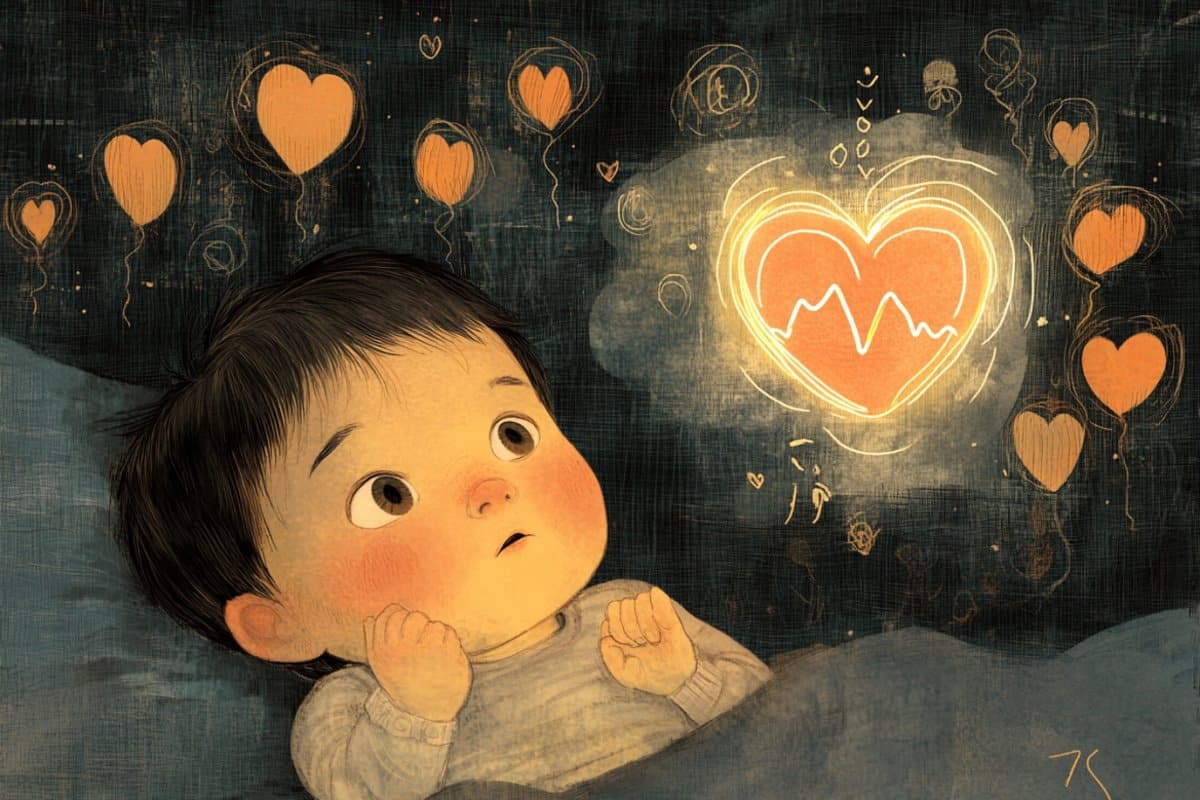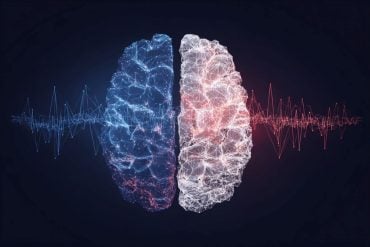Summary: A new study reveals that infants as young as three months can perceive their own heartbeat, and their awareness of breathing develops during the second year of life. This early body awareness is closely linked to emotional development, identity, and interactions with caregivers.
Using eye-tracking to detect infants’ attention to animations that moved in sync with their heartbeat or breathing, researchers found that babies spent more time looking at synchronized figures. These results provide new insights into the origins of self-awareness and suggest that bodily perception starts much earlier than previously thought.
Key Facts:
- Heartbeat Awareness: Infants as young as 3 months can detect their own heartbeat.
- Breathing Perception: Awareness of breathing shows significant development during the second year.
- Eye-Tracking Method: Babies looked longer at animations that matched their internal rhythms.
Source: University of Vienna
Body signals such as heartbeat and breathing accompany us constantly, often unnoticed as background noise of our perception. Even in the earliest years of life, these signals are important as they contribute to the development of self-awareness and identity.
However, until know little has been known about whether and how babies can perceive their own body signals.

A recent study from Wiener Kinderstudien Lab at the University of Vienna demonstrates for the first time that babies as young as 3 months can perceive their own heartbeat. In addition, the team, headed by researchers from the University of Vienna, together with colleagues from the University of Potsdam and Royal Holloway University of London, also investigated for the first-time infants’ perception of their own breathing and found developments during the first two years of life.
The results are now published in the prestigious journal eLife.
The perception of internal body signals is closely linked to emotional awareness, mental health, and self-perception.
Early in life the ability to perceive one’s own body signals may be particularly important, as it often forms the basis for interactions with caregivers – for example babies rely on their caregivers to respond appropriately to signs of hunger or discomfort.
Moreover, the development of self-awareness and identity partly depends on the perception and experience of one’s own body.
The study shows that even 3-month-old babies can perceive their own heartbeat and that this ability remains relatively stable during the first two years of life.
At the same time, the findings indicate that the perception of breathing improves significantly during the second year. Interestingly, the ability to perceive the heartbeat and breathing does not appear to be related – much like in adults.
Measuring body awareness in babies is challenging, as, unlike adults, you cannot simply rely on verbal report. Therefore, the research team used innovative methods by tracking the infants’ eye movements as they watched child-friendly figures. These figures moved either in synchrony with the child’s heartbeat or breathing, or with a slight time delay.
Results showed that even at an early age, babies recognize the correspondence between their own heartbeat or breathing rhythm and the animated figures. They looked longer at the screen when the figures were in synchrony than when they were delayed.
“The babies must have recognized that the figures moved simultaneously with their heartbeat or breathing, and then they paid more attention,” said the study’s lead author, Markus Tünte from the University of Vienna.
These findings open up exciting perspectives for future developmental psychology research. In particular, it is important to explore how early body awareness relates to the development of emotional and social skills, as well as the role parents play in shaping early body perception.
In the long term, such research could be used to promote healthy body awareness and, consequently, the mental health of children.
About this neurodevelopment research news
Author: Corporate Communications
Source: University of Vienna
Contact: Corporate Communications – University of Vienna
Image: The image is credited to Neuroscience News
Original Research: Open access.
“Respiratory and Cardiac Interoceptive Sensitivity in the First Two Years of Life” by Markus Tünte et al. eLife
Abstract
Respiratory and Cardiac Interoceptive Sensitivity in the First Two Years of Life
Several recent theoretical accounts have posited that interoception, the perception of internal bodily signals, plays a vital role in early human development.
Yet, empirical evidence of cardiac interoceptive sensitivity in infants to date has been mixed. Furthermore, existing evidence does not go beyond the perception of cardiac signals and focuses only on the age of 5–7 mo, limiting the generalizability of the results.
Here, we used a modified version of the cardiac interoceptive sensitivity paradigm introduced by Maister et al., 2017 in 3-, 9-, and 18-mo-old infants using cross-sectional and longitudinal approaches. Going beyond, we introduce a novel experimental paradigm, namely the iBREATH, to investigate respiratory interoceptive sensitivity in infants.
Overall, for cardiac interoceptive sensitivity (total n=135) we find rather stable evidence across ages with infants on average preferring stimuli presented synchronously to their heartbeat. For respiratory interoceptive sensitivity (total n=120) our results show a similar pattern in the first year of life, but not at 18 mo.
We did not observe a strong relationship between cardiac and respiratory interoceptive sensitivity at 3 and 9 mo but found some evidence for a relationship at 18 mo. We validated our results using specification curve- and mega-analytic approaches.
By examining early cardiac and respiratory interoceptive processing, we provide evidence that infants are sensitive to their interoceptive signals.






